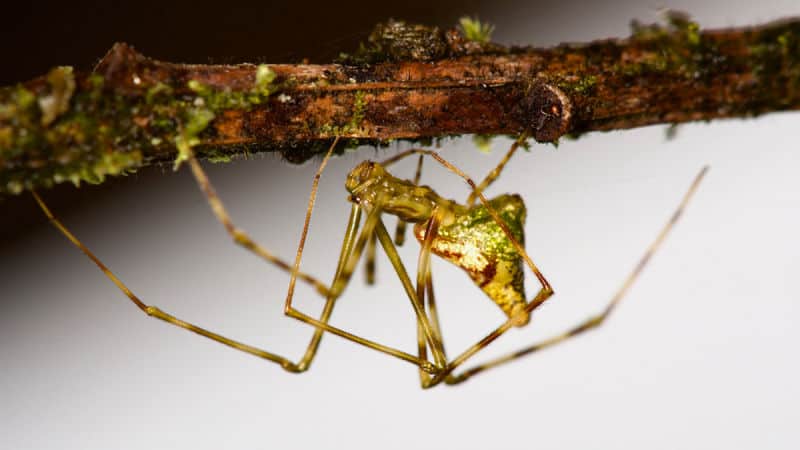
Environments make species. This was the fundamental biology lesson that was drilled into Charles Darwin when he visited the Galápagos Islands back in 1835, a trip that ultimately inspired his theory of natural selection. Nearly 200 years later, scientists in Hawaii have stumbled upon a fascinating evolutionary quirk that would’ve made Darwin proud—the discovery of spiders that are independently and repeatedly evolving the same characteristics over and over again.
This story starts about 3 million years ago, when a single species of stick spider somehow made its way to Hawaii. The new arrivals figured they could make a living as they always had, raiding the webs of other spiders and stealing their prey. But Hawaii was fresh out of the oven at this stage in history, and spider webs were few and far between. The stick spiders had to quickly adapt to their new digs, which they did by trapping and eating other spiders.
Armed with this new strategy, some found it beneficial to hide under rocks. Bam! A new species was created. Another group preferred to hide under leaves. Bam! Another species created. This process, known as adaptive radiation, was repeated again and again, generating 14 new versions from the founding population of Hawaiian stick spiders. Researchers from UC Berkeley were the ones to make this discovery, the details of which have been published in the science journal Current Biology.
But the story doesn’t end there. Of these 14 new species, only three “ecomorphs” were formed. When biologists talk about ecomorphs they’re referring to species with the same habitat or niche who share similar physical characteristics despite not necessarily being closely related. In this case, the stick spiders radiated into three ecological types: brown rock-dwelling spiders, shiny gold leaf-dwelling spiders, and a white matted species of spider that munches on lichen.
But what makes this so fascinating is that the three ecomorphs evolved independently of one another on different Hawaiian islands. This island chain formed chronologically, with Kauai being the first and oldest at 5 million years, followed by Oahu, Molokai, Lanai, Maui, and finally the big island of Hawaii. When a new island emerged and became habitable, the stick spiders made their way over and the adaptive radiation process started anew. Incredibly, the pattern of brown, gold, and white ecomorphs re-emerged; the ecomorphs on each island aren’t directly related to each other (as proven by genetic analysis), aside from sharing that common ancestor who drifted across the Pacific Ocean so many years prior.
“This very predictable repeated evolution of the same forms is fascinating because it sheds light on how evolution actually happens,” said lead author Rosemary Gillespie in a statement. “Such outstanding predictability is rare and is only found in a few other organisms that similarly move around the vegetation.”
Gillespie said these spiders can be found in virtually every habitat on each island, adding that this “really detailed and finely tuned repetition of evolution of the same form is really quite uncommon.” Back in 2004, the same team of scientists observed a similar evolutionary process in another Hawaiian spider, the Tetragnatha spider, which has also evolved similar ecomorphs in various environments over time.
It may be uncommon, but it makes complete sense. Adaptive radiation and the emergence of ecomorphs is closely related to a phenomenon known as parallel evolution—where identical physical and behavioral characteristics emerge in unrelated species that are geographically isolated. This happens when species find themselves in similar ecological niches, and they stumble upon similar survival strategies. It’s often said that evolution is random, but that’s not entirely accurate; genetic mutation may be random, but selection is most certainly not. In this case, the Hawaiian island chain exhibits nearly identical habitats, leading to this beautiful example of repeated diversification and “deterministic evolution.”
Darwin observed a similar process in the Galápagos Islands when he noticed slight variations in the beaks of finches. Like the Galápagos, Hawaii is an excellent place to look for examples of adaptive radiation. Due to limited population sizes, geographic isolation, and recent geological emergence, these small islands serve as a kind of controlled experiment for biologists to study evolution at work. In this case, the Berkeley researchers were able to study how the spiders leapt from island to island, adapting to their new environment in some remarkably predictable ways.
